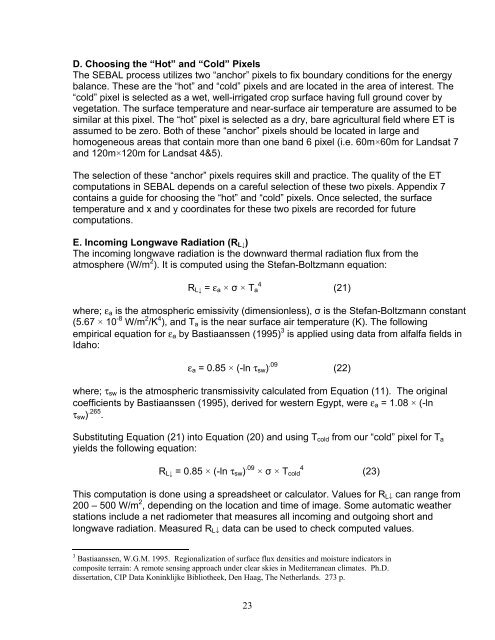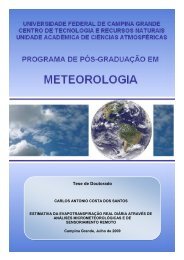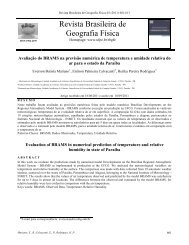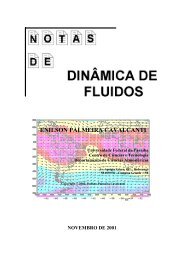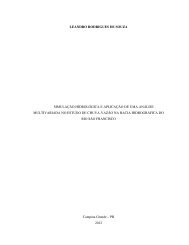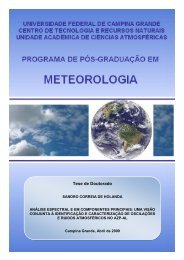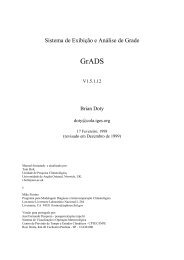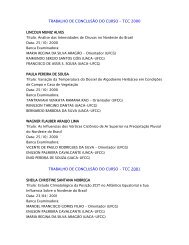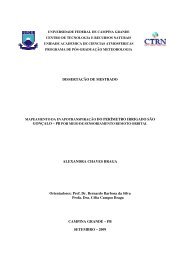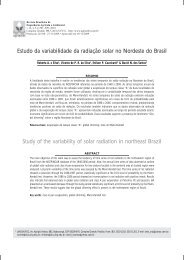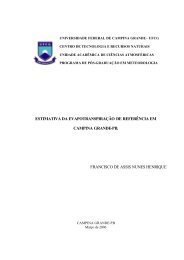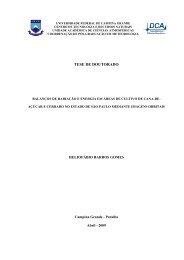Create successful ePaper yourself
Turn your PDF publications into a flip-book with our unique Google optimized e-Paper software.
D. Choosing the “Hot” and “Cold” PixelsThe <strong>SEBAL</strong> process utilizes two “anchor” pixels to fix boundary conditions for the energybalance. These are the “hot” and “cold” pixels and are located in the area of interest. The“cold” pixel is selected as a wet, well-irrigated crop surface having full ground cover byvegetation. The surface temperature and near-surface air temperature are assumed to besimilar at this pixel. The “hot” pixel is selected as a dry, bare agricultural field where ET isassumed to be zero. Both of these “anchor” pixels should be located in large andhomogeneous areas that contain more than one band 6 pixel (i.e. 60m×60m for Landsat 7and 120m×120m for Landsat 4&5).The selection of these “anchor” pixels requires skill and practice. The quality of the ETcomputations in <strong>SEBAL</strong> depends on a careful selection of these two pixels. Appendix 7contains a guide for choosing the “hot” and “cold” pixels. Once selected, the surfacetemperature and x and y coordinates for these two pixels are recorded for futurecomputations.E. Incoming Longwave Radiation (R L↓ )The incoming longwave radiation is the downward thermal radiation flux from theatmosphere (W/m 2 ). It is computed using the Stefan-Boltzmann equation:R L↓ = ε a × σ × T a4(21)where; ε a is the atmospheric emissivity (dimensionless), σ is the Stefan-Boltzmann constant(5.67 × 10 -8 W/m 2 /K 4 ), and T a is the near surface air temperature (K). The followingempirical equation for ε a by Bastiaanssen (1995) 3 is applied using data from alfalfa fields inIdaho:ε a = 0.85 × (-ln τ sw ) .09 (22)where; τ sw is the atmospheric transmissivity calculated from Equation (11). The originalcoefficients by Bastiaanssen (1995), derived for western Egypt, were ε a = 1.08 × (-lnτ sw ) .265 .Substituting Equation (21) into Equation (20) and using T cold from our “cold” pixel for T ayields the following equation:R L↓ = 0.85 × (-ln τ sw ) .09 × σ × T cold4(23)This computation is done using a spreadsheet or calculator. Values for R L↓ can range from200 – 500 W/m 2 , depending on the location and time of image. Some automatic weatherstations include a net radiometer that measures all incoming and outgoing short andlongwave radiation. Measured R L↓ data can be used to check computed values.3 Bastiaanssen, W.G.M. 1995. Regionalization of surface flux densities and moisture indicators incomposite terrain: A remote sensing approach under clear skies in Mediterranean climates. Ph.D.dissertation, CIP Data Koninklijke Bibliotheek, Den Haag, The Netherlands. 273 p.23


